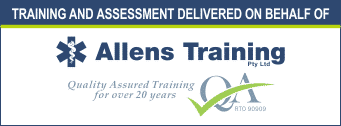In a recent survey, it was discovered that one in 3 people didn’t know a single sign of a stroke. First aid training is something everyone should consider, especially when it comes to recognizing and acting on stroke symptoms. One of the best tools for this is the FAST acronym. Let’s break down what strokes are, how they affect the body, and how the FAST acronym can help you provide immediate assistance.
What is a Stroke?
Imagine you’re at a family barbecue, and suddenly your uncle starts acting strangely—his speech is slurred, and he can’t lift his arm properly.
He might be having a stroke. A stroke happens when the blood supply to part of the brain is interrupted or reduced, preventing brain tissue from getting oxygen and nutrients. Within minutes, brain cells start to die.
There are two main types of strokes: ischemic and hemorrhagic. An ischemic stroke, the most common type, is caused by a blockage in an artery. A hemorrhagic stroke is caused by a blood vessel that breaks and bleeds into the brain.
Strokes can have severe consequences, including physical disabilities, cognitive impairment, and even death. That’s why recognizing the symptoms early and providing immediate first aid is crucial.
Understanding Stroke in Simple Terms
Think of your brain as a busy city and the blood vessels as highways delivering oxygen and nutrients to every part. If there’s a traffic jam (ischemic stroke) or a major accident (hemorrhagic stroke) on these highways, parts of the city can’t function properly. This can cause serious problems, like the city’s lights flickering or some areas losing power completely.
In your body, this “power loss” can show up as weakness in your face, arms, or legs, trouble speaking, or confusion. That’s why it’s so important to recognize these signs quickly and get help.
The FAST Acronym
FAST stands for Face, Arms, Speech, and Time. These four key indicators can help you quickly identify if someone is having a stroke and take action fast.
- Face: Ask the person to smile. Does one side of their face droop? A drooping face is a common sign of a stroke. It indicates that the muscles on one side of the face are not working properly.
- Arms: Ask the person to raise both arms. Does one arm drift downward? Arm weakness or numbness can be a sign of a stroke. The affected arm may be difficult to lift or may not respond at all.
- Speech: Ask the person to repeat a simple sentence, like “The sky is blue.” Is their speech slurred or strange? Difficulty speaking or understanding speech is a critical sign of a stroke.
- Time: If you observe any of these signs, it’s time to call emergency services immediately. Time is brain. The faster a person gets medical attention, the better their chances of recovery.

More About Strokes: Causes and Risk Factors
Strokes are often linked to other health conditions. High blood pressure, diabetes, high cholesterol, and heart disease can all increase the risk of stroke. Lifestyle choices such as smoking, excessive alcohol consumption, and lack of physical activity also play a significant role.
Certain factors like age, gender, and family history can’t be changed, but many risk factors can be managed or controlled through healthy living and medical care. Regular check-ups and maintaining a healthy lifestyle are essential in reducing the risk of stroke.
What to Do After Calling for Help
While waiting for emergency services to arrive, there are a few things you can do to help the person having a stroke:
- Keep Them Comfortable: Help the person sit or lie down in a comfortable position. Keep them calm and reassured. Stress and panic can make the situation worse.
- Monitor Symptoms: Keep an eye on the person’s symptoms and note any changes. This information can be helpful for the medical team when they arrive.
- Do Not Give Food or Drink: Do not give the person anything to eat or drink. They may have difficulty swallowing, which could cause choking.
- Check for Other Injuries: If the person fell or injured themselves during the stroke, provide appropriate first aid for those injuries as well.
Long-Term Effects of a Stroke
The impact of a stroke varies greatly from person to person. Some people may recover completely, while others may have long-term or permanent disabilities. Common long-term effects include:
- Physical Weakness or Paralysis: This often affects one side of the body.
- Speech and Language Problems: Difficulty speaking, understanding, reading, or writing.
- Cognitive Issues: Problems with memory, attention, or problem-solving.
- Emotional Changes: Depression, anxiety, or mood swings.
Rehabilitation and therapy are crucial for recovery. Physical therapy, occupational therapy, speech therapy, and support from healthcare professionals can help stroke survivors regain their independence and improve their quality of life.

Prevention: Reducing the Risk of Stroke
While first aid is essential, prevention is the best approach. Here are some tips to reduce the risk of stroke:
- Maintain a Healthy Diet: Eat plenty of fruits, vegetables, whole grains, and lean proteins. Reduce salt, sugar, and unhealthy fats.
- Exercise Regularly: Aim for at least 30 minutes of moderate exercise most days of the week.
- Avoid Smoking and Limit Alcohol: Smoking significantly increases the risk of stroke. If you drink alcohol, do so in moderation.
- Manage Chronic Conditions: Keep conditions like hypertension, diabetes, and high cholesterol under control with medication and lifestyle changes.
- Regular Health Check-Ups: Regular visits to your healthcare provider can help detect and manage risk factors.
The Role of First Aid in Stroke Management
Immediate first aid can significantly impact the outcome of a stroke. By recognizing the symptoms and acting quickly, you can ensure the person gets the medical attention they need. Here’s a quick recap of what you should do:
- Recognize the Signs: Use the FAST acronym to identify symptoms of a stroke.
- Call for Help: Contact emergency services immediately if you suspect someone is having a stroke.
- Provide Comfort and Monitor: Keep the person comfortable and monitor their symptoms while waiting for help.
Conclusion: Be Prepared with First Aid Training
First aid training is crucial for everyone. Knowing how to provide first aid, especially recognizing and responding to strokes using the FAST acronym, can save lives. At My First Aid Brisbane, we offer first aid training at seven convenient locations, with an online pre-course and a short practical hands-on session. Our courses are well-reviewed and designed to be practical and effective.
Taking a basic first aid course ensures you are prepared to act in an emergency. Enroll today and gain the confidence and skills to provide first aid when it matters most. Remember, in the case of a stroke, acting FAST can make all the difference.






